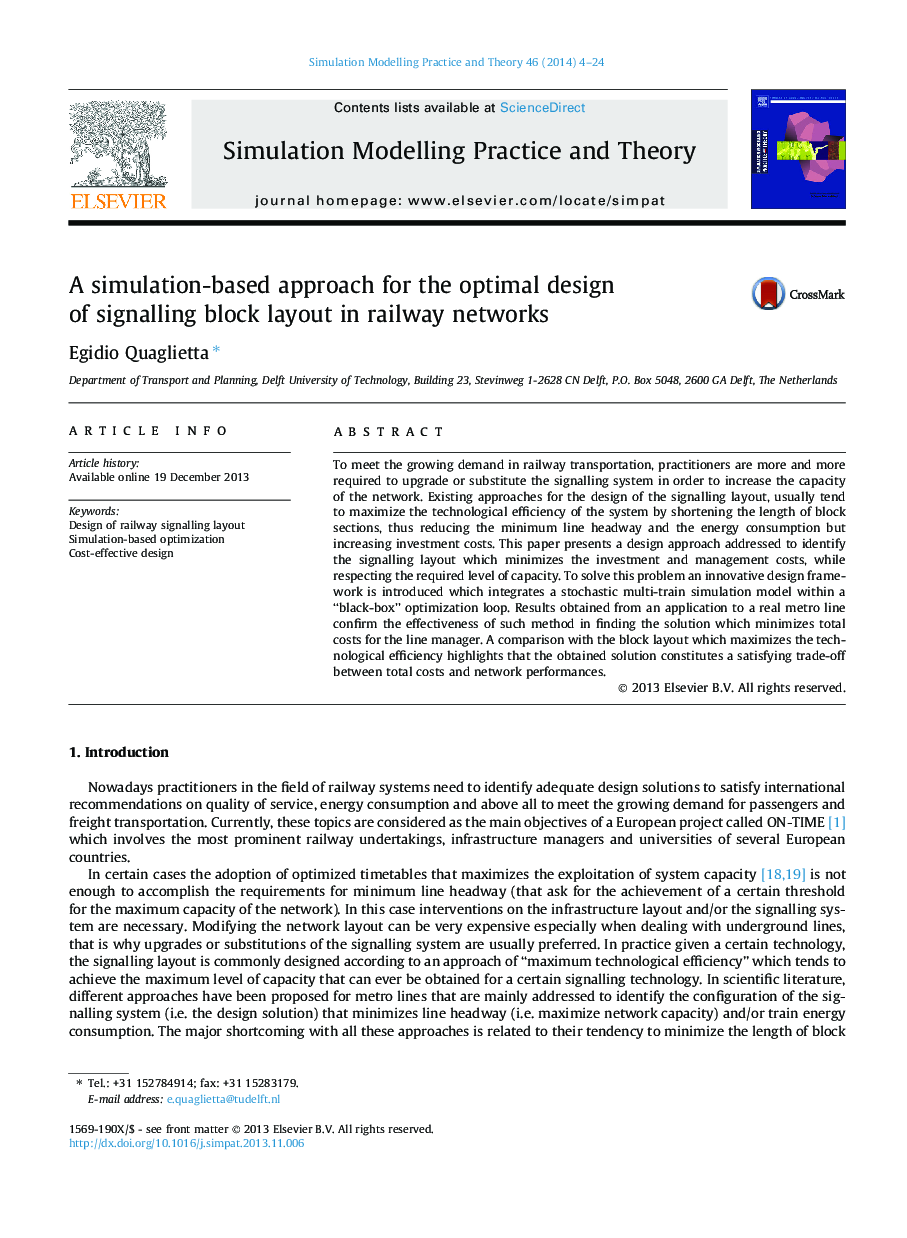| Article ID | Journal | Published Year | Pages | File Type |
|---|---|---|---|---|
| 493588 | Simulation Modelling Practice and Theory | 2014 | 21 Pages |
•A stochastic simulation-based optimization is used for designing railway systems.•A railway simulation model is interfaced with a black-box algorithm.•The signalling layout is designed to maximize the efficiency of the investments.•The obtained layout strongly reduces total costs respecting capacity requirements.•The approach returns robust solutions balancing costs and network performances.
To meet the growing demand in railway transportation, practitioners are more and more required to upgrade or substitute the signalling system in order to increase the capacity of the network. Existing approaches for the design of the signalling layout, usually tend to maximize the technological efficiency of the system by shortening the length of block sections, thus reducing the minimum line headway and the energy consumption but increasing investment costs. This paper presents a design approach addressed to identify the signalling layout which minimizes the investment and management costs, while respecting the required level of capacity. To solve this problem an innovative design framework is introduced which integrates a stochastic multi-train simulation model within a “black-box” optimization loop. Results obtained from an application to a real metro line confirm the effectiveness of such method in finding the solution which minimizes total costs for the line manager. A comparison with the block layout which maximizes the technological efficiency highlights that the obtained solution constitutes a satisfying trade-off between total costs and network performances.
